

World Heritage Sites
designated by
UNESCO
the World Heritage Committee has inscribed 890 properties on the World Heritage List
The following are some I have visited:
| La Fortaleza and San Juan Historic Site in Puerto Rico, United States of America |
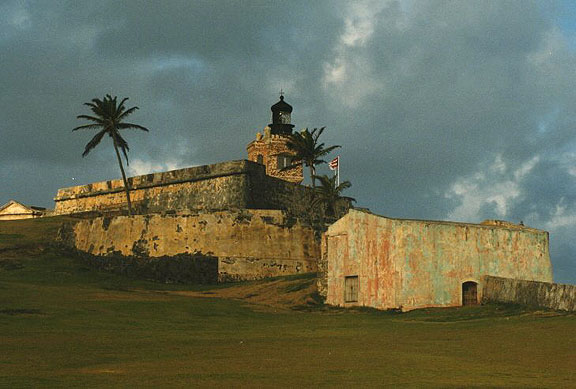
the El Morro Fortress in San Juan
Between the 15th and 19th centuries, a series of defensive structures was built at this strategic point in the Caribbean Sea to protect the city and the Bay of San Juan. They represent a fine display of European military architecture adapted to harbour sites on the American continent.
| Statute of Liberty, United States of America |
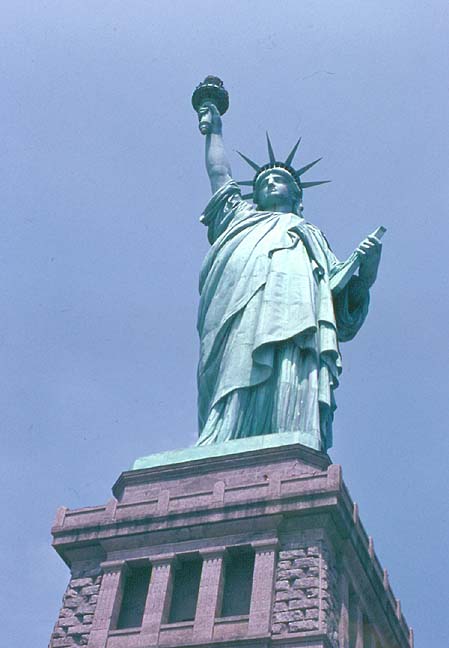
Made in Paris by the French sculptor Bartholdi, in collaboration with Gustave Eiffel (who was responsible for the steel framework), this towering monument to liberty was a gift from France on the centenary of American independence in 1886. Standing at the entrance to New York Harbour, it has welcomed millions of immigrants to the United States of America since it was inaugurated in 1886.
| Yosemite National Park, United States of America |
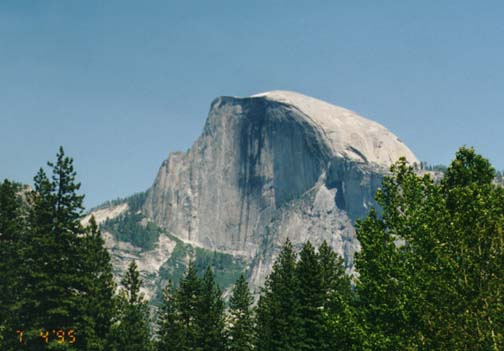
half dome from Yosemite valley
Yosemite National Park lies in the heart of California. With its 'hanging' valleys, many waterfalls, cirque lakes, polished domes, moraines and U-shaped valleys, it provides an excellent overview of all kinds of granite relief fashioned by glaciation. At 600–4,000 m, a great variety of flora and fauna can also be found here.
| Monticello and the University of Virginia in Charlottesville, United States of America |
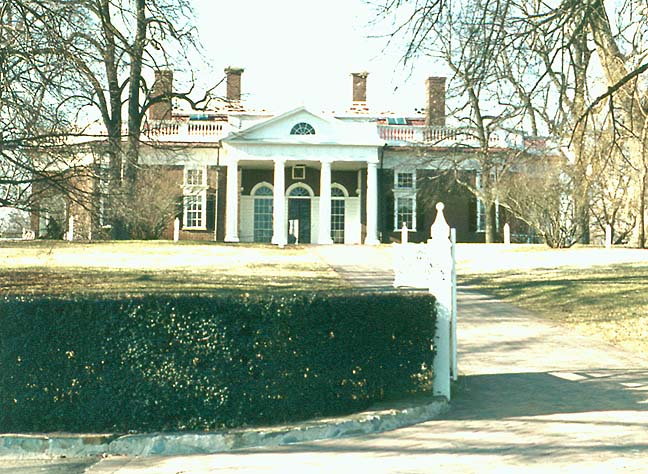
Monticello
Thomas Jefferson (1743–1826), author of the American Declaration of Independence and third president of the United States, was also a talented architect of neoclassical buildings. He designed Monticello (1769–1809), his plantation home, and his ideal 'academical village' (1817–26), which is still the heart of the University of Virginia. Jefferson's use of an architectural vocabulary based upon classical antiquity symbolizes both the aspirations of the new American republic as the inheritor of European tradition and the cultural experimentation that could be expected as the country matured.
| Chaco Culture National Historical Park, United States of America |

the Kiva of Chaco Canyon
For over 2,000 years, Pueblo peoples occupied a vast region of the south-western United States. Chaco Canyon, a major centre of ancestral Pueblo culture between 850 and 1250, was a focus for ceremonials, trade and political activity for the prehistoric Four Corners area. Chaco is remarkable for its monumental public and ceremonial buildings and its distinctive architecture – it has an ancient urban ceremonial centre that is unlike anything constructed before or since. In addition to the Chaco Culture National Historical Park, the World Heritage property includes the Aztec Ruins National Monument and several smaller Chaco sites managed by the Bureau of Land Management.
| Hawaii Volcanoes National Park, United States of America |

volcanic flow landscape
Two of the most active volcanoes in the world, Mauna Loa (4,170 m high) and Kilauea (1,250 m high), tower over the Pacific Ocean at this site. Volcanic eruptions have created a constantly changing landscape, and the lava flows reveal surprising geological formations. Rare birds and endemic species can be found there, as well as forests of giant ferns.
| Pueblo de Taos, United States of America |
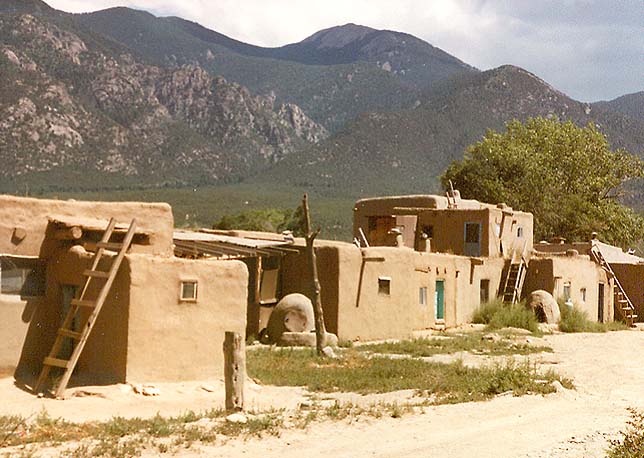
Taos Pueblo
Situated in the valley of a small tributary of the Rio Grande, this adobe settlement – consisting of dwellings and ceremonial buildings – represents the culture of the Pueblo Indians of Arizona and New Mexico.
| Carlsbad Caverns National Park, United States of America |
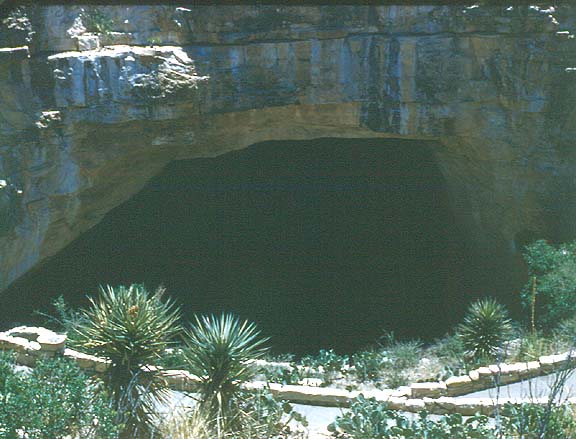
entrance to the caverns
This karst landscape in the state of New Mexico comprises over 80 recognized caves. They are outstanding not only for their size but also for the profusion, diversity and beauty of their mineral formations. Lechuguilla Cave stands out from the others, providing an underground laboratory where geological and biological processes can be studied in a pristine setting.
| The Historic Quarter of the City of Colonia del Sacramento, Uruguay |
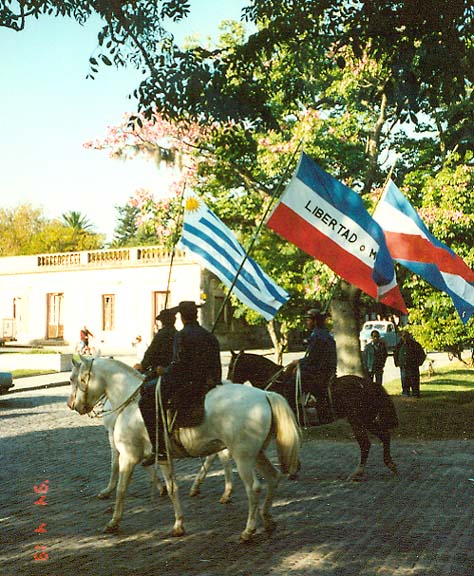
parade in Colonia
Founded by the Portuguese in 1680 on the Rio de la Plata, the city fulfilled a strategic function against the Spanish Empire. Disputed for a century, it was finally lost by its founders. Its preserved urban landscape, a mixture of solemnity and intimacy, is an example of the successful fusion of the Portuguese, Spanish and post-colonial styles.
| Historic Centre of Bukhara, Uzbekistan |
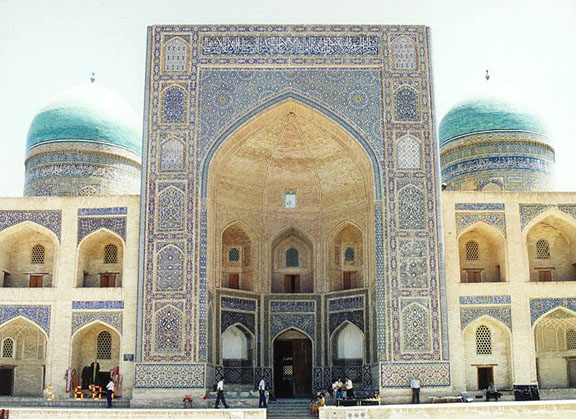
médersa
(working Muslim seminary from the 16th century)
Situated on The Silk Road, Bukhara is more than two thousand years old. It is the most complete example of a medieval city in Central Asia, with an urban fabric that has remained largely intact. The monuments of interest include the Ismail Samani's famous tomb, a masterpiece of 10th-century Moslem architecture, and a number of 17th-century médersas.
| Historic Centre of Shakhrisyabz, Uzbekistan |
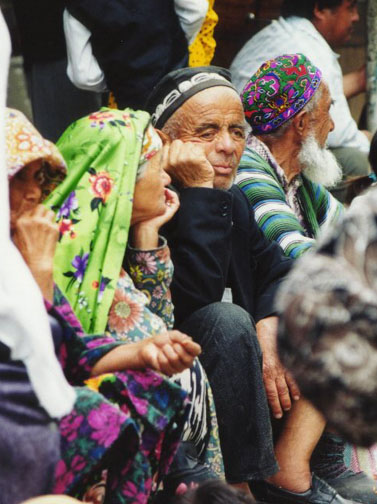
people of Shakhrisyabz
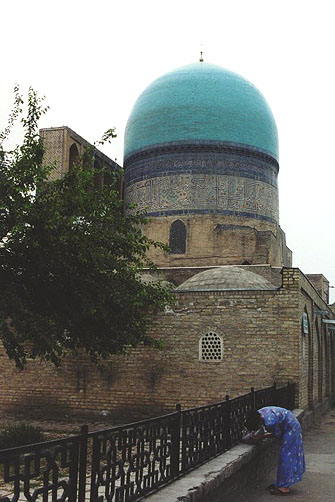
Dome of the Seyyids
The historic centre of Shakhrisyabz contains a collection of exceptional monuments and ancient quarters which bear witness to the centuries of its history, and particularly to the period of its apogee, under the empire of Timur, in the 15th century.
| Samarkand - Crossroads of Cultures, Uzbekistan |
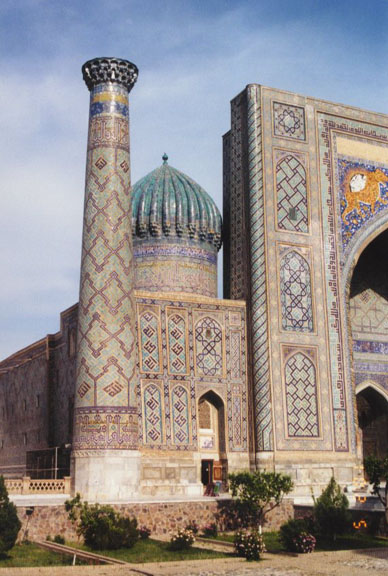
Registan Mosque
The historic town of Samarkand is a crossroad and melting pot of the world's cultures. Founded in the 7th century BC as ancient Afrasiab, Samarkand had its most significant development in the Timurid period from the 14th to the 15th centuries. The major monuments include the Registan Mosque and madrasahs, Bibi-Khanum Mosque, the Shakhi-Zinda compound and the Gur-Emir ensemble, as well as Ulugh-Beg's Observatory.
| Canaima National Park, Venezuela |

the falls
Canaima National Park is spread over three million hectares in south- eastern Venezuela along the border between Guyana and Brazil. Roughly 65 per cent of the park is covered by table mountain (tepui) formations. The tepuis constitute a unique biogeological entity and are of great geological interest. The sheer cliffs and waterfalls, including the world's highest (1,000 metres), form a spectacular landscape.
| The Complex of Hué Monuments, Vietnam |

Imperial City
Established as the capital of unified Vietnam in 1802, Hué was not only the political but also the cultural and religious centre under the Nguyen Dynasty until 1945. The Perfume River winds its way through the Capital City, the Imperial City, the Forbidden Purple City and Inner City, adding natural beauty to this unique feudal capital.
| Old City of Sana'a, Yemen |
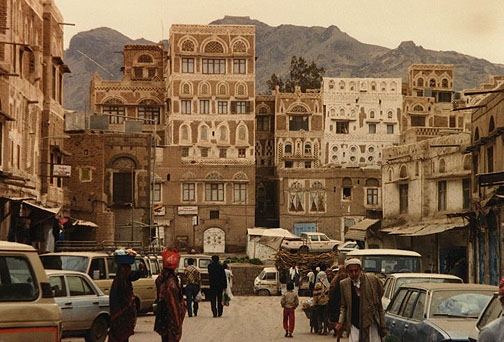
along main street Sana'a
Located in a mountain valley at an altitude of 2200 m, Sana'a has been inhabited for more than 2500 years. In the 7th and 8th centuries the town became a major centre for the spread of Islam. This religious and political heritage can be seen in its 106 mosques, 12 hammams and 6500 houses, all built before the 11th century. Sana'a's many-storeyed tower or pisé houses add to the beauty of the site.
My Life List of World Heritage sites I have visited
![]()
Return to Favorite Experiences page
![]()